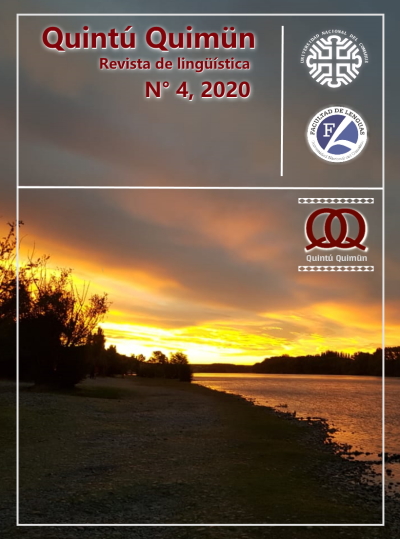Sign language linguistics: left hand signers non-inversion of some signs as an argument in favour of a breaking perspective based on iconicity
Main Article Content
Abstract
According to Fusellier-Souza (2004), researchers in the field of sign language linguistics can be organized in two large groups: (i) those who believe that sign languages must be identical to spoken languages and, thus, base their research on the phenomena and categories previously described for the latter; and (ii) those who believe that sign languages, being visual-spatial communication systems, may involve mechanisms and phenomena different from those found in spoken languages. In this article I present some arguments in favor of the second view, and identify some problems that arise from the traditional perspective (based on equivalence), which can easily be solved if we adopt a proposal which acknowledges the complexity, richness and difference of sign languages as communication systems.
Downloads
Article Details
Los autores de los artículos publicados conservan los derechos de copyright.
Licencia de uso:

Creative Commons Atribución-NoComercial-CompartirIgual 4.0 Internacional.
References
Battison, Robbin (1974). Phonological deletion in American Sign Language. Sign Language Studies, Volume 5: 1-19. DOI: 10.1353/sls.1974.0005
Bauman, H-Dirksen (2003). Redesigning literature: the cinematic poetics of American Sign Language. Sign Language Studies, Volume 4/1: 34-47. DOI: 10.1353/sls.2003.0021
Cabré, M. Teresa y Lorente, Mercé (2003). Panorama de los paradigmas en lingüística. En: Estany, A. (coord.) (2004). Enciclopedia Iberoamericana de Filosofía. Vol. Ciencias exactas, naturales y sociales. Madrid: Consejo Superior de Investigaciones Científicas.
Cuxac, Christian (2000). La langue des signes française. Les voies de l’iconicité. París: Éditions OPHRYS.
De Saussure, Ferdinand (1945/1916). Curso de lingüística general. Buenos Aires: Losada.
Dingemanse, Mark; Blasi, Damián; Christiansen, Morten; Lupyan,
Gary & Monaghan, Padraic (2015). Arbitrariness, iconicity, and systematicity in language. Trends in cognitive science. Volumen 19/10. DOI: http://dx.doi.org/10.1016/j.tics.2015.07.013
Fusellier-Souza, Ivani (2004). Sémiogenèse des langues des signes. Étude de langues des signes émergentes pratiqueés par des sourds brésiliens. Tesis de doctorado. Université Paris VIII, París.
Frishberg, Nancy (1975). Arbitrariness and Iconicity: Historical Change in American Sign Language. Language. Volumen 51/3: 696-719.
Givón, Talmy (1985). Iconicity, isomorphism and non-arbitrary coding in syntax. En John Haiman (ed.) (1985). Iconicity in syntax. Philadelphia: John Benjamins B. V., 187-219.
Haiman, John (1983). Iconic and economic motivation. Language. Volumen 59, No. 4: 781-819.
Ibarretxe-Antuñano, Iraide (2010). Lexicografía y lingüística cognitiva. RESLA. 23: 195-213.
Massone, María Ignacia y Martínez, Rocío Anabel (2012). Curso de lengua de señas argentina. Recuperado a partir de https://cultura-sorda.org/biblioteca/libros/#2012 el 21 de octubre de 2020.
Oviedo, Alejandro (2006). El 2do. Congreso Internacional de Maestros de Sordomudos celebrado en Milán, Italia, del 6 al 11 de Septiembre de 1880. Recuperado a partir de https://cultura-sorda.org/biblioteca/articulos/historia/#2006 el 21 de octubre de 2020.
Peirce, Charles Sanders (1974) La ciencia de la semiótica. Buenos Aires: Nueva Visión.
Peluso, Leonardo (2014). Nueva versión del modelo de descripción fonológico TRELSU: matriz segmental- articulatoria, configuración y movimiento. Lengua de señas e interpretación. Número 5: 63-95.
Lakoff, George (1987). Women, fire and dangerous things. What categories reveal about the mind. Chicago: University of Chicago.
Liddell, Scott (2003). Grammar, gesture, and meaning in American Sign Language. Nueva York: University of Buffalo.
Liddell, Scott y Johnson, Robert (1986). American Sign Language: The phonological base. Sign Language Studies. Número 65: 195-277.
Sallandre, M. A. (2003). Les unités du discours en Langue des Signes Française. Tentative de catégorisation dans le cadre d’une grammaire de l’iconicité. Tesis de doctorado. Université Paris VIII, París.
Schembri, Adam (2003). Rethinking "classifiers" in signed languages. En Karen Emmorey (ed.) Perspective on classifier constructions in sign languages. Nueva York: Psychology Press, 3-34.
Stokoe, William (1960). Sign language structure: an outline of the visual communication systems of the American deaf. Nueva York: University of Buffalo.
Supalla, Ted (1986). The classifier system in American Sign Language. En Colette Craig (ed.) Noun classes and categorization. Philadelphia: John Benjamins Publishing Company, 181-214.
Taub, Sarah (2001). Language from the body. Iconicity and metaphor in American Sign Language. Nueva York: Cambridge University Press.
Tervoort, Bernard (1978) Bilingual interference. En I. M. Schlesinger & Lila Namir (eds.) Sign language of the deaf. Psychological, linguistic and sociological perspectives. Londres: Academic press.
Val, Santiago (2018). Iconicidad y discurso. Análisis de narraciones en lengua de señas uruguaya desde una perspectiva cinematográfica. Montevideo: Área de Estudios Sordos.
Wilcox, Sherman (2004). Cognitive iconicity: conceptual spaces, meaning, and gesture in signed languages. Cognitive linguistics. Volumen 15/2:119-147.
